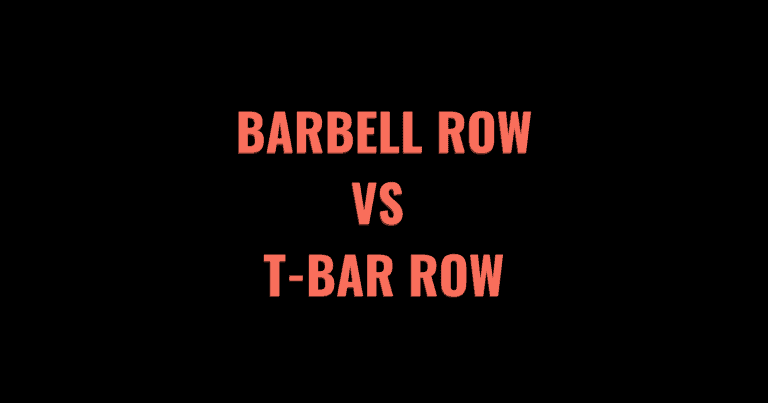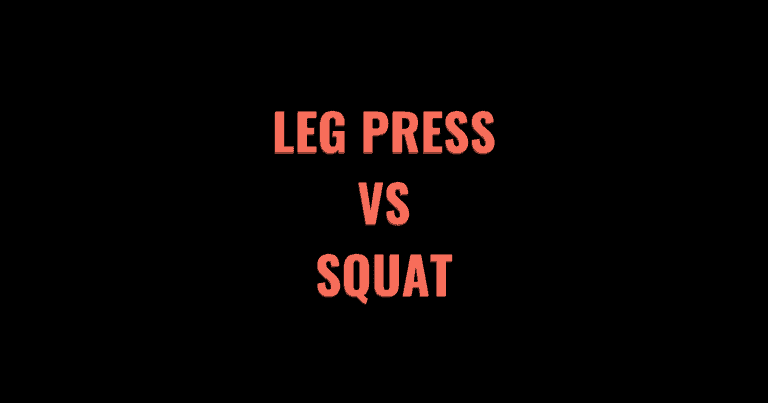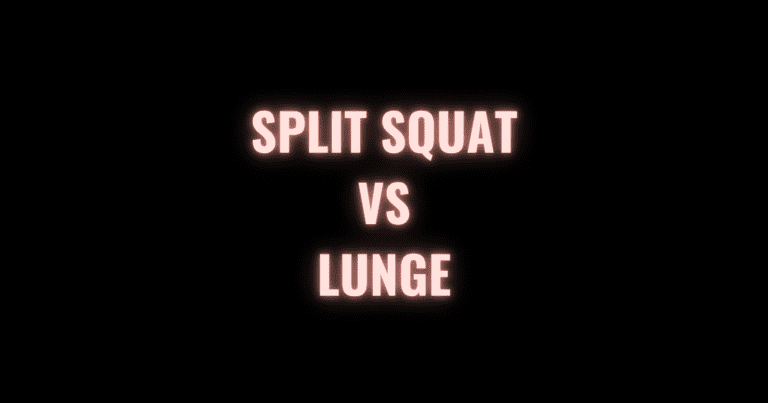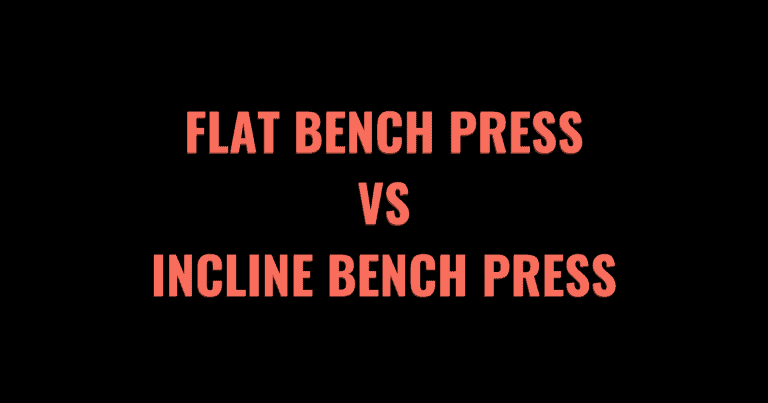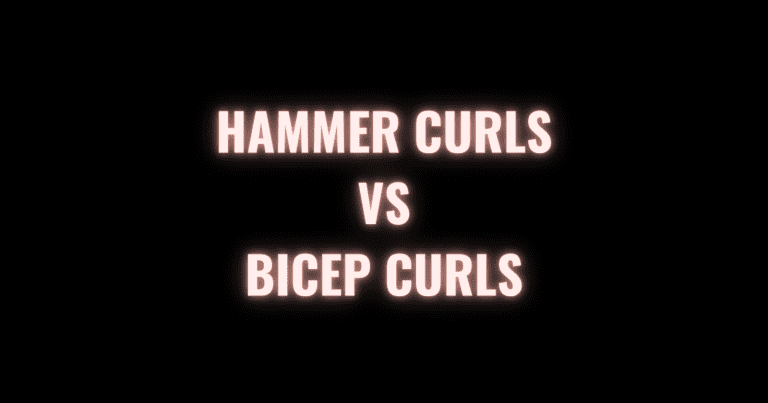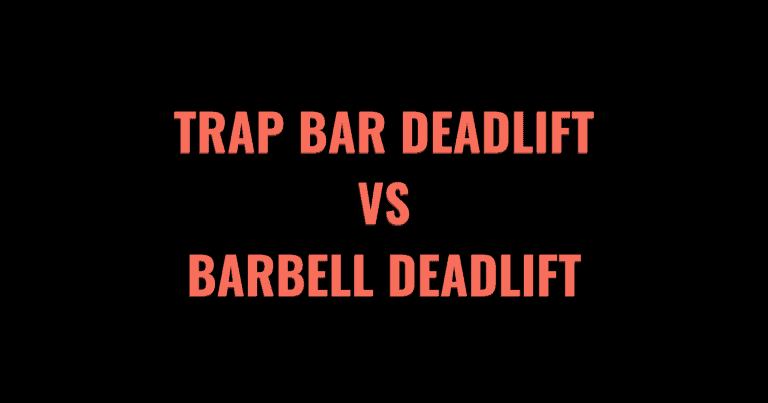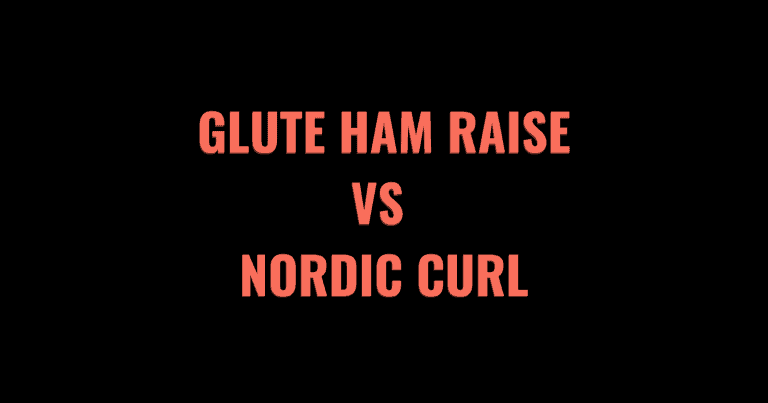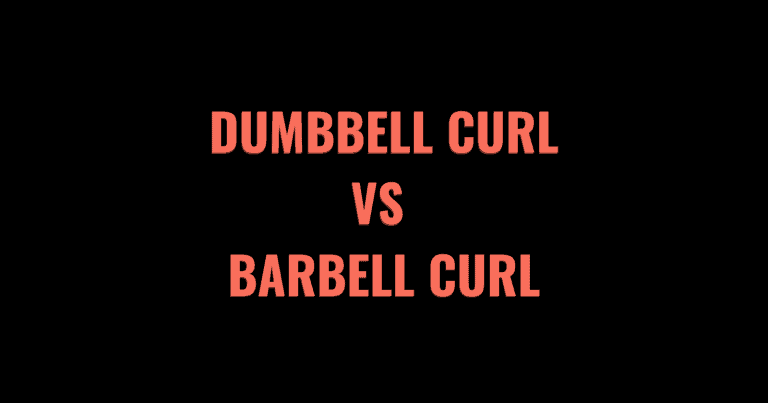Whether you’re looking to pack on muscle mass or build strength, the deadlift is a great exercise to add to your routine.
There are many deadlift variations though, so it can be difficult to decide which one is best for your goals, equipment, etc.
Two of the most popular deadlift variations are conventional deadlifts, also known as traditional deadlifts, and Romanian deadlifts, also known as an “RDL.”
Both have their strengths and weaknesses, which is exactly what we are going to cover in this article.
Specifically, we will be diving deep into the main differences between these two exercises, such as which is better for strength training, hamstring development, and aesthetic goals.
Without further ado, let’s jump straight into the comparison!
Table of Contents
- 1 What is the main difference between the deadlift and Romanian deadlift?
- 2 Pros and Cons
- 3 When To Do an Exercise
- 4 Muscles Targeted
- 5 Form
- 6 Which is Better, the Conventional Deadlift or Romanian Deadlift?
- 7 FAQs
- 8 Other Exercise Comparison Posts
- 8.1 Barbell Row vs T-Bar Row: Differences, Pros, and Cons
- 8.2 Rack Pulls vs. Deadlifts: Differences, Pros, and Cons
- 8.3 Floor Press vs. Bench Press: Pros, Cons, and Differences
- 8.4 EZ Curl vs Straight Bar Curls: Differences, Pros, and Cons
- 8.5 Leg Press vs. Squat: Differences, Pros, and Cons
- 8.6 Split Squat vs Lunge: Differences & Benefits
- 8.7 Flat vs. Incline Bench Press: Which is Better?
- 8.8 Dips vs Bench Press: Pros & Cons
- 8.9 Hammer Curls vs Bicep Curls: Which is Better?
- 8.10 Trap Bar Deadlift vs. Barbell Deadlift: Is One Better?
- 8.11 Glute Ham Raise vs Nordic Curl: Differences and Benefits
- 8.12 Barbell Curl vs Dumbbell Curl: Benefits & Differences
- 9 References
What is the main difference between the deadlift and Romanian deadlift?
Two key differences between the deadlift and the Romanian deadlift are the starting position and the muscles activated. A deadlift starts from the floor and the Romanian deadlift starts with the weight held slightly below the waist. The deadlifts activate the quads and mid-back more than a Romanian deadlift, while the Romanian deadlift targets the hamstrings and glutes more.
This is illustrated well in this video from Bar Bend.
Romanian deadlifts start from a standing position. They activate the glutes and hamstrings more than conventional deadlifts. Most people are stronger when performing conventional deadlifts compared to Romanian deadlifts.
With that said, conventional deadlifts place a much larger emphasis on the concentric (i.e. upward) portion of the lift, whereas Romanian deadlifts target the eccentric portion. Therefore, Romanian deadlifts are likely superior for hypertrophy, especially for hamstring and glute development.
If you want to grow bigger hamstrings, consider the Romanian deadlift your new best friend!
If your goal is to gain strength in your entire posterior chain, then a conventional deadlift is likely a better option than Romanian deadlifts. However, if you want to specifically grow your glutes and hamstrings while putting less strain on your lower back, then a Romanian deadlift may be a better alternative to conventional deadlifts.
Keep reading to learn more about the pros and cons of each exercise and how to perform them properly!
Pros and Cons
Conventional Deadlift Benefits
Here are some of the benefits of conventional deadlifts:
- Conventional deadlifts engage more muscles of the back and quads. A 2018 study concluded that conventional deadlifts were superior to Romanian deadlifts for quad activation.
- Since conventional deadlifts start from the floor, they are considered to be a more functional movement because lifting things off the ground is quite common in everyday life.
- Conventional deadlifts have greater carry-over to other lifts, such as snatches, cleans, and farmer’s carries.
- Most people can lift a lot more weight with conventional deadlifts compared to Romanian deadlifts.
- Conventional deadlifts do not require a spotter because they start from the floor and you can easily drop the weight safely if you fail. However, this could also apply to Romanian deadlifts.
- Conventional deadlifts are used in powerlifting competitions, so if you’re planning on competing, then it’s practically a mandatory lift.
- Minimal equipment is needed to perform conventional deadlifts, all you need is a barbell and some plates.
- Conventional deadlifts do not require a squat rack since they start from the floor.
- Conventional deadlifts engage more muscles, which is beneficial if you’re limited on the amount of time or number of days you can train.
Conventional Deadlift Cons
Here are some of the drawbacks of conventional deadlifts:
- Injury risk is increased with conventional deadlifts because it places more strain on the low back. Since deadlifts are one of the ways people assess their strength, their egos tend to get the best of them. This can lead to lifting more than they can handle and having their lower back round excessively. This can cause shearing in the lumbar portion of the spine, which can lead to injuries.
- As the weight increases, your grip strength may be a limiting factor, forcing you to use lifting straps or a mixed grip (one hand over, one hand under). Unfortunately, a mixed grip places more strain on the bicep brachii for the arm that’s in a supinated position which will put you at a higher risk for bicep tears. It’s important to mention that using a hook grip can eliminate this risk and also counteract the limitation of grip strength.
- Conventional deadlifts typically require an Olympic barbell and plates to be performed properly, whereas with Romanian deadlifts you can use dumbbells, EZ-Bars, and even standard barbells.
- Because they require an Olympic barbell, you need a good amount of floor space to do conventional deadlifts.
- Conventional deadlifts are more likely to scrap your shins because the barbell is very close to your body.
- Conventional deadlifts can be difficult to perform for taller individuals.
Romanian Deadlift Benefits
Here are some benefits of Romanian deadlifts:
- Romanian deadlifts target the hamstrings and glutes more than conventional deadlifts, making them better for increasing the size of your glutes and hamstrings. If you’re more quad dominant, then Romanian deadlifts may help balance that out by increasing the strength of the posterior chain.
- Unlike conventional deadlifts, Romanian deadlifts do not require any special equipment. Since Romanian deadlifts start from a standing position, any barbell will work, such as Olympic, standard, EZ-bar, and even dumbbells.
- Since Romanian deadlifts place less strain on the lower back, you’re less likely to get injured. In fact, a 2020 study found that Romanian deadlifts were associated with lower erector spinae activation than other deadlift variants. However, it’s still possible. So practicing good techniques, like maintaining a neutral spine, is important.
Romanian Deadlift Cons
Here are some drawbacks of Romanian deadlifts:
- Although Romanian deadlifts place less strain on your lower back, the load is transferred to the hamstrings, putting you at a higher risk for hamstring tears.
- Tight hamstrings can significantly limit your range of motion when performing Romanian deadlifts. To prevent injury, it’s crucial to stay within your own active range of motion and not try to force past it.
- Romanian deadlifts start from a standing position, so they are not as functional and do not carry over as well to other lifts compared to conventional deadlifts.
- Romanian deadlifts are inferior for back hypertrophy because do not target much of the upper or mid-back.
- Similar to conventional deadlifts, grip strength can be a limiting factor, especially in high rep ranges. Your grip may give out before you completely exhaust the hamstrings and glutes. Therefore, straps may be necessary once you reach a certain amount of weight.
- Romanian deadlifts are easier to perform with a squat rack set-up, which most people don’t have at home or it may be taken at the gym.
When To Do an Exercise
When to do a conventional deadlift
Anyone that wants to increase strength and grow their back, hamstrings, glutes, and quads should consider doing conventional deadlifts. If you want to compete in powerlifting, then a conventional deadlift is crucial to have in your routine.
Back day or leg day?
Deciding when to do a conventional deadlift isn’t very clear since the exercise works the entire posterior chain (e.g. back, hamstrings, glutes). Depending on your workout split, you can perform conventional deadlifts on leg or back days.
Some people prefer doing conventional deadlifts on a back day so they can use it as their main compound movement for the workout. Whereas if you add it to your leg day, you may be too exhausted due to other demanding compound exercises, such as squats.
What’s more, if you’re looking to compete in powerlifting, CrossFit, or Olympic lifting, then dedicating a day to improving your conventional deadlift is likely a good idea rather than doing squats and deadlifts on the same day.
With that said, if competition is approaching it’s wise to perform squats and deadlifts in the same session to get used to what that feels like.
Whether you choose to do conventional deadlifts on leg day or back day, it’s a good idea to place them as your first or second exercise due to how physically demanding they are.
When to do a Romanian Deadlift
Anyone that wants to build and strengthen their glutes and hamstrings should consider doing Romanian deadlifts. Furthermore, if you have a previous history of low back injury or are limited in terms of equipment, then a Romanian deadlift may be a better exercise to incorporate than conventional deadlifts.
Unlike conventional deadlifts, Romanian deadlifts are most commonly performed on leg days since they engage the glutes and hamstrings to a greater extent. Romanian deadlifts are still considered to be a taxing movement, so placing them as your first or second exercise within a training session is ideal.
Even those that compete in powerlifting, Olympic lifting, or CrossFit can benefit from doing Romanian deadlifts, especially if you lack strength in your posterior chain and are more quad dominant.
Muscles Targeted
Conventional Deadlift Muscles Used
Conventional deadlifts primarily work the hamstrings, including biceps femoris, semitendinosus, and semimembranosus, in addition to the glutes, quads, and erector spinae. Secondarily, conventional deadlifts engage the traps, forearms, lats, calves, and adductors.
The key difference is that conventional deadlifts activate the erector spinae and quadriceps more than Romanian deadlifts.
Primary Muscles
- Hamstrings
- Biceps femoris
- Semitendinosus
- Semimembranosus
- Gluteus Maximus
- Erector spinae
- Quads


Secondary Muscles
- Traps
- Lats
- Calves
- Adductor Magnus
- Forearm flexors
Romanian Deadlift Muscles Used
Romanian deadlifts primarily target the hamstrings and glutes. However, they secondarily engage the erectors, forearm flexors, calves, and adductors.
Primary Muscles
- Hamstrings
- Biceps Femoris
- Semitendinosus
- Semimembranosus
- Gluteus Maximus
Secondary Muscles
- Erector spinae
- Adductor Magnus
- Calves
- Forearm flexors
Form
How to do a conventional deadlift with proper form
Here’s how to do a conventional deadlift:
- Load an Olympic barbell with an appropriate amount of starting weight. The barbell should be on the floor. Stand straight up with the barbell directly above your mid-foot.
- With your arms straight, push your hips back and slightly bend your knees until you are able to grab the barbell with a shoulder-width grip. (The bar should touch your shins)
- Keep your chest up and look straight ahead.
- Take a deep breath into your core and begin to pull the slack out of the bar by pulling your shoulder back.
- Begin to lift the bar off the ground by pressing your heels into the floor.
- Once the bar is just above your knees, thrust your hips forward until you’re standing straight up.
- Hold for a brief second before reversing the motion to lower the weight back to the floor in a controlled fashion.
Check out this in-depth video from Jeff Nippard to learn how to perform conventional deadlifts properly and how to avoid common mistakes.
How to do a Romanian deadlift with proper form
Here’s how to do a Romanian deadlift:
- Set up a squat rack with the barbell positioned just above your knees.
- Grab the barbell with a double overhand grip. Your hands should be positioned just outside your thighs. (note: a mixed grip or straps may be used to avoid grip fatigue.)
- Stand up straight and take three steps back.
- Stand with a shoulder-width stance with your feet pointed slightly out (about 10 degrees)
- Before beginning the movement, brace by lifting your chest and stomach up and taking a deep breath in.
- Initiate the movement by driving your hips straight back. Maintain a slight bend in your knees and a neutral spine.
- Lower the bar until you can no longer push your hips back without having your lower back round, which is usually just below knee level or the middle of the shin.
- Reverse the motion by pushing your hips forward, lifting your chest up, and contracting your glutes at the top.
Watch this in-depth video from Jeff Nippard to see how to do a Romanian deadlift properly and what common mistakes to avoid.
Which is Better, the Conventional Deadlift or Romanian Deadlift?
When it comes to targeting the glutes and hamstrings, Romanian deadlifts seem to be more effective than conventional deadlifts. Furthermore, they are less physically demanding, allowing you to recover faster. However, if you’re limited on time and want to train more muscle groups at once, then conventional deadlifts reign supreme since they target the quads, back, hamstrings, and glutes.
Unless you’re a powerlifter, a conventional deadlift is not a mandatory exercise, although it does offer various benefits, especially since it’s considered to be a more functional movement. You’re more likely to pick something off the group than perform a Romanian deadlift in everyday life.
With that said, if you currently have low back pain or a history of low back injuries, then a Romanian deadlift will allow you to still train your hamstrings and glutes optimally. Both exercises are effective for improving posterior chain strength and development, so try them both to see which one you like most!
FAQs
Romanian deadlifts are better than conventional deadlifts at targeting the glutes and hamstrings. The Romanian deadlift is also less physically demanding, which can aid recovery.
However, the conventional deadlift is better at targeting more muscles at once. They also target the quads and back, which the Romanian deadlift doesn’t activate as much.
The Romanian deadlift is easier to recover from, less likely to cause back injuries, and targets the glutes and hamstrings more effectively than conventional deadlifts.
The conventional deadlift targets more muscles than the Romanian deadlift, which makes it a more efficient exercise. It also can be loaded more heavily than the Romanian deadlift, making it more of a strength building exercise.
Other Exercise Comparison Posts
If you enjoyed this post, check out our comparisons of other popular exercises below.
References
- Lee, S. et al. Dec. 2018. “An electromyographic and kinetic comparison of conventional and Romanian deadlifts.” Journal of Exercise Science & Fitness, vol. 16(3), pp. 87-93. https://www.sciencedirect.com/science/article/pii/S1728869X18301291
- Martín-Fuentes, I. et al. Feb. 2020. “Electromyographic activity in deadlift exercise and its variants. A Systematic Review.” PLoS One, vol. 15(2):e0229507. https://www.ncbi.nlm.nih.gov/pmc/articles/PMC7046193/
